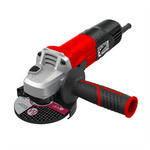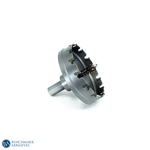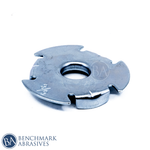
Headlight Restoration That Lasts: Grits, Coatings, and Real-World Durability

Foggy, yellowed headlights are more than just a cosmetic issue; they are a safety hazard that significantly reduces nighttime visibility. The culprits are a combination of factors: the oxidation of the polycarbonate plastic itself and the breakdown of the factory-applied clear coat by intense UV radiation. Simply polishing the surface will only offer a temporary fix because it removes the damaged layer but leaves the bare plastic exposed to the elements.
This comprehensive guide offers a professional process using a durable buffing product that helps in finishing. By following these steps, you can achieve a permanent headlight restoration that will last for years.
The Step-by-Step Restoration Process
The key to a lasting restoration is a thorough, multi-stage sanding process followed by the application of a durable, UV-resistant coating.
Step 1: Prep and Masking
Before you begin, thoroughly clean the headlights with soap and water to remove all surface contaminants. Use high-quality painter's tape to mask the surrounding paint, trim, and bumper carefully. This is a critical step to prevent accidental damage to the vehicle's finish during sanding and polishing.
Step 2: The Sanding Ladder
The sanding process removes the damaged, oxidized layer and creates a perfectly smooth surface for a new coating to bond to. Use a machine sander with an interface pad for an even finish.
- 600 Grit: This initial step is the most aggressive. Its purpose is to remove the deep oxidation, heavy yellowing, and any existing clear coat. Don't worry about the deep scratches—the subsequent steps will remove them.
- 800 Grit: This step refines the scratches from the 600-grit paper, making them less severe.
- 1000 Grit: This further refines the surface, blurring the deep scratches and preparing the lens for the finishing stages.
- 2000 Grit: This is the first of the wet-sanding steps. Apply water to the surface to lubricate and reduce friction. This step makes the lens appear hazy but evenly sanded.
- 3000 Grit: The final sanding step. Continue wet-sanding until the surface is uniformly cloudy with a smooth, consistent finish.
Find the perfect sanding discs for every stage of your restoration in our collection of sanding discs at Benchmark Abrasives.
Step 3: Choosing a Sealing Path
This is the most crucial step for long-term durability. You have two primary options for applying a new UV-resistant clear coat.
Path A: 2K Clear Coat (Spray-On)
Pros: This is the most durable, professional solution. It's a two-part epoxy-based clear coat that offers superior UV resistance and durability. The result is a factory-like finish that can last for many years.
Cons: Requires a respirator and a well-ventilated area. It's a permanent solution that can't be easily reversed.
-
Cure Window: Curing times vary by product, but they generally require a few hours to be touch-dry and several days to fully harden.
Path B: UV-Curing Wipe-On Coating
Pros: This is a user-friendly, fast-curing option. The coating hardens immediately upon exposure to a UV light source, providing a quick and effective seal.
Cons: Not as durable as a 2K clear coat. The lifespan of the restoration is typically shorter.
-
Cure Window: Cures instantly with a UV light.
No matter which path you choose, remember to protect yourself. Our PPE category includes all the respirators and safety gear you need.
Step 4: Optional Polishing
If you're using a 2K clear coat, polishing isn't necessary. However, if you choose a polish-only method or a ceramic topcoat, this step is essential. Use a dual-action polisher and a foam pad with a high-quality buffing compound. Maintain a slow RPM to prevent heat buildup and polish until the surface is crystal clear.
Preventive Maintenance for Longevity
To extend the life of your restored headlights, follow these simple maintenance tips:
- Wash Intervals: Regularly wash your car to remove dirt and contaminants.
- Top-Ups: If you used a ceramic or UV wipe-on coat, apply a top-up sealant every 6-12 months to refresh the protective layer.
- Parking Advice: Whenever possible, park in a garage or shaded area to minimize direct exposure to harsh UV rays.
Troubleshooting Common Issues
- Streaks or Runs: Occur from applying the clear coat too thickly. Use thin, even passes.
- Fisheyes: Small craters in the clear coat caused by surface contaminants like wax or silicone. Ensure the surface is completely clean and degreased before coating.
- Re-yellowing: This means the old, damaged layer was not fully removed. The solution is to go back and repeat the sanding process from the beginning. For optimal clarity after re-sanding, utilize a buffing wheel with a fine polishing compound to achieve a smooth, glass-like finish.
FAQ
Q: Do I need to remove the headlight from the car to restore it?
No, you can restore headlights while they are on the vehicle. Just be sure to properly mask the surrounding painted surfaces to protect them from sanding and chemical overspray.
Q: Can I use just a polishing compound instead of sanding?
No. A polishing compound will temporarily clear the surface by removing the top layer of oxidation, but it won't remove the deeper damage or provide a new UV-resistant clear coat. The hazing will return quickly.
Q: What is the main benefit of a 2K clear coat over a consumer-grade wipe-on kit?
A 2K clear coat is a professional-grade, two-part urethane that offers significantly higher durability and UV resistance. It creates a hard, long-lasting protective layer that outperforms most wipe-on kits, which are often single-component and less durable.
Q: How long will a permanent restoration last?
When done correctly with a high-quality 2K clear coat, a permanent restoration can last for several years, often exceeding the lifespan of many factory clear coats.



































































